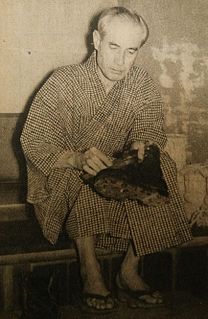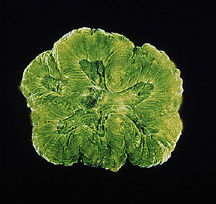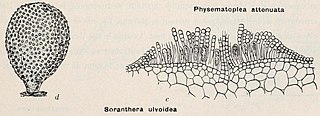Hirasea acutissima is a species of small air-breathing land snail, a terrestrial pulmonate gastropod mollusk in the family Charopidae. The width of the shell is 2 mm. The height of the shell is 4 mm. H. acutissima is endemic to Haha-jima in the Ogasawara Islands, Japan, and is listed as endangered in the IUCN Red List of Threatened Species. In 2007, the species was rediscovered after being considered to be extinct.

Hirasea is a genus of small, pulmonate land snails in the family Charopidae. This genus sees its highest diversity in the Hawaiian Islands, but species are distributed throughout Japan and Polynesia.

Hirasea biconcava is a species of small air-breathing land snail, a terrestrial pulmonate gastropod mollusk in the family Endodontidae.
Hirasea chichijimana is a species of small air-breathing land snail, a terrestrial pulmonate gastropod mollusk in the family Endodontidae.
Hirasea diplomphalus is a species of small air-breathing land snail, a terrestrial pulmonate gastropod mollusk in the family Endodontidae.
Hirasea eutheca is a species of small air-breathing land snail, a terrestrial pulmonate gastropod mollusk in the family Endodontidae.
Hirasea goniobasis is a species of small air-breathing land snail, a terrestrial pulmonate gastropod mollusk in the family Endodontidae.
Hirasea hypolia is a species of small air-breathing land snail, a terrestrial pulmonate gastropod mollusk in the family Endodontidae.
Hirasea insignis is a species of small air-breathing land snail, a terrestrial pulmonate gastropod mollusk in the family Endodontidae.
Hirasea major is a species of small air-breathing land snail, a terrestrial pulmonate gastropod mollusk in the family Endodontidae.
Fametesta mirabilis is a species of air-breathing land snail, a small terrestrial pulmonate gastropod mollusc in the family Charopidae.

Hirasea nesiotica is a species of small air-breathing land snail, a terrestrial pulmonate gastropod mollusk in the family Endodontidae.
Hirasea planulata is a species of small air-breathing land snail, a terrestrial pulmonate gastropod mollusk in the family Endodontidae.
Hirasea profundispira is a species of small air-breathing land snail, a terrestrial pulmonate gastropod mollusk in the family Endodontidae.

Hisayoshi Takeda was a notable Japanese botanist whose father was the British diplomat, Sir Ernest Satow. He was a founder of the Japanese Natural History Society, and is known for his campaign to preserve the environment at Oze, which is now Oze National Park.

Neorhodomela larix, commonly known as black pine, is a species of red algae native to coastal areas of the North Pacific, from Mexico to the Bering Sea to Japan. It forms dense mats on semi-exposed rocks in intertidal areas. The thallus is dark brown to black in color with whorled branches resembling a bottlebrush.

Isophyllia sinuosa, the sinuous cactus coral, is a species of stony coral in the family Mussidae. It is found in shallow water in the tropical western Atlantic and the Caribbean Sea.

Soranthera ulvoidea, sometimes called the studded sea balloon, is a species of brown algae in the family Chordariaceae. It is the only species in the monotypic genus Soranthera. The generic name Soranthera is from the Greek soros (heap) and antheros (blooming). The specific epithet ulvoidea refers to certain resemblances the algae has with Ulva. The name in Japanese is 千島袋のり / ちしまふろくのり literally meaning "Kuril Islands bag nori".

Canthigaster rivulata commonly known as the brown-lined puffer, or kitamakura is a marine fish belonging to the family Tetradontidae.

The JapaneseRed List is the Japanese domestic counterpart to the IUCN Red List of Threatened Species. The national Red List is compiled and maintained by the Ministry of the Environment, alongside a separate Red List for marine organisms. Similarly drawing on the relevant scientific authorities, NGOs, and local governments, the Ministry of the Environment also prepares and publishes a Red Data Book that provides further information on species and habitats.









